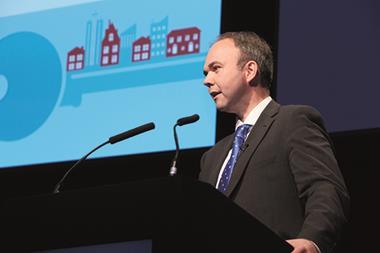The use of therapeutic use exemptions may have cast a pall over British cycling recently, but the ‘marginal gains’ policy pioneered by Sir David Brailsford and Team Sky still holds: sweating the small stuff can pay big.

As a keen cyclist, I want to apply this marginal gains thinking to the homes we build by paying attention to the smallest details.
By keeping our customers happy, we keep our investors happy.
It’s also why my company recently appointed a lifestyle residential specialist operator, LIV, to enhance the living experience offered in our new-builds, and why we have boosted our residential team to five.
Focusing on incremental but nonetheless important changes is an approach that maybe the chancellor Philip Hammond should consider as he readies his debut Autumn Statement, with housing shortages still very much at the top of the political agenda.

The government appears to be shifting away from its previous preoccupation with homeownership, adopting a more balanced focus on the various tenure types that make up UK housing. This change in emphasis, we hope, could help to spark a housebuilding boom by stimulating the build-to-rent sector (BTR).
Housing minister Gavin Barwell certainly seems receptive towards institutional capital that is already trickling its way into the sector, but could do so much more.
If we are to build the 200,000 homes the government is targeting each year to get to the magic million figure by the end of the decade then, in keeping with Sir David’s ideas, a few marginal changes could make all the difference:
- More public land could be made available for a multitude of tenures, whether for rent, sale, discounted market rent or social rent. Letting is a significantly faster process than selling, motivating BTR investors to build faster if a portion is allocated for rental purposes. This has to be good for placemaking, creating additional homes and the local economies that benefit from a wave of new consumers.
- With a new administration I think there is an opportunity to scrap the 3% SDLT for new BTR schemes over a certain scale and held for a certain period. The message that the additional charge sent to investors wasn’t well received. It also damaged planned returns and scuppered a number of deals.
- Local authorities badly in need of additional homes could reconsider charging large-scale BTR properties for landlord registration schemes.
- Additional funding to resource local planning departments would speed up the planning process for developers, bringing new-build projects to the fore. In turn this would encourage smaller housebuilders to build more. Currently 40% of UK homes are built by the top 10 house builders because it’s only the bigger operators that can withstand the long delays and difficulties involved with gaining planning permission.
- The government could encourage or legislate for local authorities to combine private rented sector and discounted market rent elements in their viability assessments for affordable housing. Ealing council recently did just this at our North Acton development.
- The Greater London Authority could review their minimum space standards. I think there is a size below current standards that can still boost long-term occupation, which would enable greater density within the same envelopes.
This is by no means an exhaustive wish list for Messrs Hammond and Barwell, but if enacted would go some way to helping the BTR sector to alleviate Britain’s housing problems and encourage planners and greater numbers of housebuilders to get on their proverbial bike and go faster.
Alex Greaves is head of residential at M&G Real Estate
































No comments yet